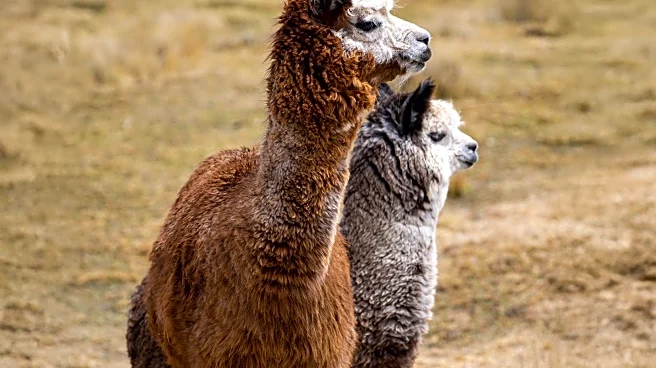What's Happening?
Llamas and alpacas, both members of the camelid family, are often confused due to their similar appearance. However, they have distinct differences. Llamas are larger, weighing between 280 to 450 pounds, and have long noses and coarse hair. Alpacas are smaller, weighing 100 to 175 pounds, with short noses and fine, silky hair. Llamas are used as pack animals due to their size and strength, while alpacas are valued for their luxurious fiber used in textiles. Their temperaments also differ, with llamas being more protective and alpacas more timid.
Why It's Important?
Understanding the differences between llamas and alpacas is crucial for those involved in agriculture, textile production, and animal husbandry. Llamas' ability to carry heavy loads makes them valuable in farming and transportation, while alpacas' fiber is sought after in the fashion industry for its warmth and softness. The distinct temperaments of these animals also influence their roles in farms and petting zoos, affecting how they are handled and cared for. Knowledge of these differences can aid in making informed decisions regarding their use and management.
What's Next?
As interest in sustainable and ethical farming practices grows, the demand for alpaca fiber may increase, leading to more farms specializing in alpaca breeding. This could result in advancements in breeding techniques to enhance fiber quality. Additionally, the use of llamas in eco-friendly transportation and farming may expand, promoting their role in sustainable agriculture. Educational programs may emerge to teach the public about the benefits and care of these animals, fostering a deeper appreciation for their contributions.
Beyond the Headlines
The presence of llamas and alpacas in the U.S. highlights the repatriation of species that originated in North America. Their roles in agriculture and textiles reflect broader trends in sustainable practices and ethical consumption. The cultural significance of these animals, particularly in South American traditions, may influence their popularity and use in the U.S., contributing to a diverse agricultural landscape.












